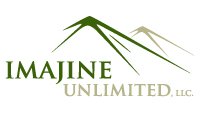“If we deny people’s great need for relationships, for systems of support, for work that connects to a larger purpose, they push back.”
– Margaret J. Wheatley
What does a leadership team look like to you? The dictionary definition defines team as “a number of persons associated in some joint action.” A team is a group of people who join together to get something done. When my children play on a sports team they come together for a season with other youth to develop skills and win a game.
Often with organizations, we also act as teams. We come together to accomplish a goal. But what happens when the season for that goal changes? When we are hired to do just a job, we can see that job as short lived. When the work is complete, the job is done. I believe that people often want to come together for something more enduring. When people choose a career, it is an outlet for their purpose. This can be a life-long pursuit.
Instead of building leadership teams, I wonder if we should be building leadership communities. The dictionary definition of community is: “social groups of any size whose members reside in a specific locality, share government, and often have a common cultural and historical heritage.” Let’s look at each of these components of a community.
Relationships & Communication
When you bring people together for a common mission and vision, you have “a social group in a specific locality.” A work group is a community of relationships. Too often we become so focused on tasks that we forget that the heart of the group are the people and the relationships that connect them together. Each person has a talent set, and we need each other to accomplish the mission.
For this to work effectively, we communicate. Your work group may all be in the same office or you could be decentralized and connected by technology. What matters most is that communication is flowing. How do you prioritize the connection of relationships and flow of communication in your group?
Practices
A community has a “shared government.” A work group needs defined practices that clarify how they operate. It is important to keep clear the purpose of practices. Practices are not for controlling people. This only stifles creativity and lowers people’s engagement. Instead the purpose of practices is to bring order.
As you seek structure in your community work group, ask yourself what the purpose of the structure is? Is it to help bring order so that people can work together more effectively, communicate better, live the values, etc.? Or is the structure driven by fear to make sure that you have ultimate control?
Values and Culture
A community has a common culture and heritage. A social group will always have a culture to it. As a leader, you have a choice to be proactive or reactive with the development of culture. A culture in any group will flow from its values. It is always best to be proactive and to define the community’s values. The values then need to be communicated and practices need to be released that promote those values.
What are your values? How are you engaging your community work group to define practices that support values and allow flow of communication?
People are looking for leadership communities where they can live their purpose in relationships with others. You have an opportunity to move beyond a leadership team to a leadership community. As a leader, you can foster enduring communities that allow individuals to live their purpose for a common mission that will leave a legacy. Be proactive to define your purposes, values and practices and then to live them out in relationships that share information together.
